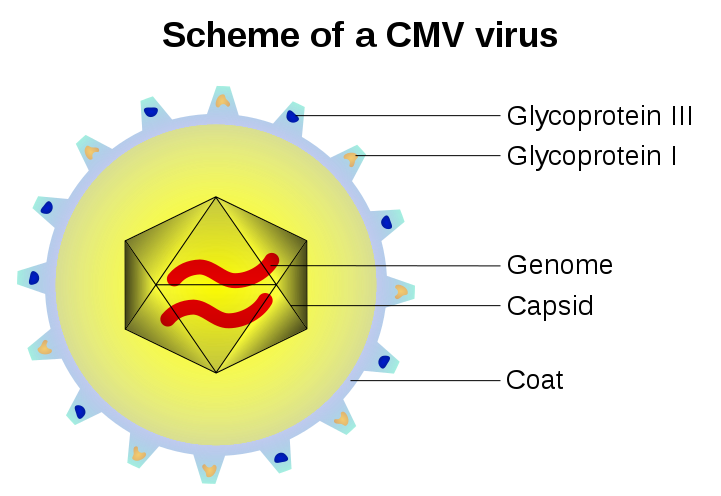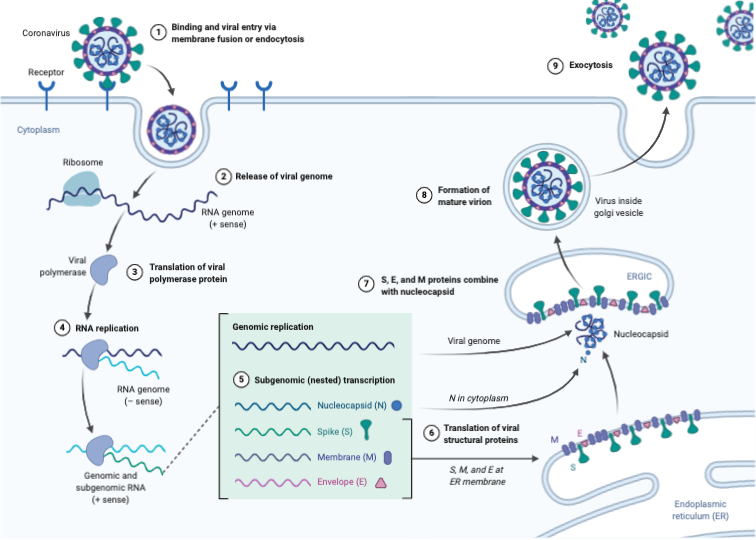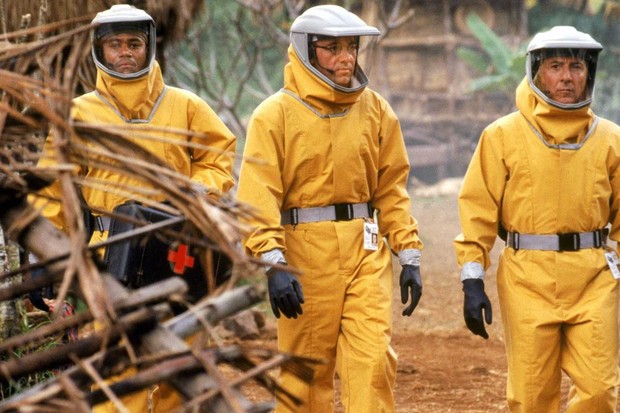Despite all of the world’s focus being on one (or two) viruses at the present moment, it may be easy to think there are only a handful of different types around.
Yeah – that’s really not true.
Volume-wise – there are an estimated 1031 viruses on earth. That’s a hundred million times more than there are stars in the known universe. In terms of types of viruses…that’s a constantly changing number, but estimates range from over a million to a more modest 320,000 or so different types, but then more recently, even that number jumped up to over a half-million when a new study announced 200,000 new viruses were found in the ocean.
Estimates – and these are just estimates – put the actual number of types of viruses easily at double whatever number you chose to go with up there. Rough estimates were originally based on each species having about 20 or so viruses that were specific to infecting that species. Viruses tend to be specialized operators.
But – and this but is important – not all of those viruses are out to get us. Of those half-million to million-plus different types of viruses, a little over 200 are known to infect humans. That difference between the estimate of 20 and 200 comes thanks to spillover – a virus that made its home in one species infects another species (say, us), usually due to proximity of the two.
In the face of so many types of viruses on earth, the fact that just over 200 virus types will infect humans is cold comfort in the midst of a pandemic caused by just one virus that we just discovered last year (which is why it’s called COVID-19).
Looking at our respective wheelhouse – pop culture meeting up with science – viruses have been well represented over the years in all media. Countless movies, television series, episodes, comic books, video games, animation and more have featured viruses as the unknown threat.
On the “based on real-life” side of things, pop culture offers only a few solid examples of stories with real-world viruses. A while back, I was looking at the Batman: Contagion storyline to talk about R-naught values and exponential growth. The virus in that storyline that caused the Clench – the name given to the hemorrhagic fever which had an astronomically high mortality rate – was given as Ebola Gulf-A, which is a species of filovirus. The Contagion story was influenced/inspired by Richard Preston’s The Hot Zone, as was the film Outbreak with its Motaba virus, based on Ebola, while Contagion’s MEV-1 was flu-like and also based on a real virus.
But all told, not many viruses in our stories are named, or even clearly based on known viruses. They just do what the plot needs them to do – which is usually kill or change a lot of people. For example, you have the Kalavirus of 12 Monkeys, 28 Days Later/28 Weeks Later’s Rage Virus, the Krippen Virus of I Am Legend, Chimera of Mission Impossible 2, ALZ-112 of Rise of the Planet of the Apes, and the unnamed, man-made or genetically created/mutated viruses of the Resident Evil series, or the instigating viruses of Cabin Fever, Birdbox, and the viruses of Dawn of the Dead, The Walking Dead, and countless other zombie movies and stories.
Viruses can take a place beside vampires, mummies, slashers, giant monsters, and other classic and terrifying “monsters” of pop culture as the new boogeyman – unseen and either a) deadly or b) something that steals the self. Both of which are pretty horrible outcomes of infection. We fear what we don’t understand. While that’s been the storyline at the root of many “virus” versions of pop culture, it certainly feels like there’s a thread of that in the real world today – that of people fearing what they don’t understand. And making decisions or reacting based on that fear.
Let’s try and fix that – at least a little, and try to understand viruses a bit better. At least part of their big picture that’s concerned with how many there are out there, and how they fit in the grand scheme of things.
Oh, and if you’re wondering why I suggested perhaps two current viruses that the world is concerned about at this time, the other is Ebola. The recent, two-year-old Ebola outbreak (the second deadliest on record) just ended in the Democratic Republic of Congo. Reading about why the outbreak lasted so long is somewhat harrowing at this point in the pandemic, as there are many reports of efforts by doctors in controlling the spread being disrupted by mobs of angry protestors, suspicious of the health worker’s efforts or other activities in the regions affected by the virus.
So let’s talk about viruses.
What Makes a Virus?
Viruses vary wildly and widely in their size, their shape, and their respective “life” cycles. But to be a virus, you’ve pretty much got three things in common with everyone else in the club. Moving from the outside in:
- An envelope, or coat. Many viruses that infect animals have this outermost protection, but not all. This is the layer that soap goes after – in the case of SARS-CoV-2, it’s made up of lipids, which soap, by virtual of its chemical properties, can rip apart, causing the virus’ insides to spill out. In an expected (see below for the whole dead/alive thing as context) creepy move, the envelope isn’t “part” of the virus. It can’t make its own if it has it. It clips and steals if on its way out of the host cell it’s hijacked. Viruses with envelopes then put their own proteins on the outside of them, which are used to bind to new host cells (such as SARS-CoV-2’s spike protein which binds to ACE2). I’m not saying that this is like the murderer wearing the face of a victim to trick other potential victims into recognizing them, but I’m not saying it’s not like that either.
- A capsid. This is the protective case for the virus’ genetic material (either DNA or RNA). The capsid is made of small protein units called capsomers. Everyone (if you’re a virus) has a capsid, and whatever genetic material you’re carrying has the instructions to make it in your hijacked host cell. The three most common shapes capsids takes are icosahedral, filamentous or head-tail.
- A genome. This is the money – composed of either DNA or RNA, the virus’ genetic material tells the host cell what to do once it’s infected. The form the DNA and RNA take inside a virus can be weird – you can have the normal, double-stranded DNA, or you can single-strand. Likewise, you can have the normal version of RNA, single-stranded, or you can have double-stranded RNA. Generally speaking, the genome of viruses are much, much smaller than the host organism’s DNA.

A generalized view of the CMV virus, showing the coat/envelope, icosahedral capsid and genome. Emmanuel Boutet / CC BY-SA (https://creativecommons.org/licenses/by-sa/2.5)
And that’s pretty much it. There may be variations with different types of viruses, but that’s what it takes to make you a virus. On the plus side – if you’re looking to fight or disable a virus – you’ve got a number of targets to attack, some easier than others, within those characteristic structures. On the minus side – these things aren’t really playing the game right, are they? I mean…are they even alive?
Dead. Alive. Virus?
For big things like us, the line between living and dead is pretty clear. But let’s categorize that a little more – how do we know something is alive? What does our list with characteristics we can check off look like when we’ve got questions?
There are roughly seven major factors biologists will use to determine if something is alive or…not. This is Bio 101 stuff…
1) Organization – is the thing organized with certain parts doing specific things to benefit the whole? We’ve got that going on. Single-celled bacteria have that going on. Viruses…er…yeah…kinda?
2) Metabolism – the chemical reactions that, when combined, allow life to do things. To get over this hurdle, your living things need to be able to make complicated things from simple things (anabolism, which generally uses energy) and break complicated things down into simple things (catabolism, which usually releases stored energy).
3) Homeostasis – if you’re alive, you need to be able to control the conditions inside your body. Whatever you call your body, #nobodyjudging. This includes internal temperature, pH and a host of other factors that make up an internal environment.
4) Growth – what’s the point of being alive if you can’t grow? Living things get bigger, by either adding more cells to the larger “body” (hello, mitosis!) or increasing the volume of a single cell, if that’s the way they roll.
5) Reproduction – the sex stuff. Or the asexual stuff. Not judging. Living things create new organisms like themselves. If you’re a living thing, you can simply split into two copies if that’s your thing, or combine cells with another living thing like you to make a new thing, that’s living, like you.
6) Response – interaction with the environment. Single-celled organisms will head towards nutrients, favorable stuff, and away from noxious stimuli. Multicellular organisms will respond to heat, light, a Dad joke, and many other things.
7) Evolution – small genetic change over time in response to the environment. If the changes are selected “for” (give the individual an advantage in regards to reproduction or resource acquisition, for example), there’s a good chance that those genetic changes will appear in successive generations. You do it. Bacteria do it. All living things do it.
8) – wherever – add what you can defend. The seven above are the most general and accepted characteristics of living things but by no means all of them. Some biologists will add in other conditions that are covered in these larger categories, or held out specifically – movement, made of cells, or “develop,” but the initial seven are good for our purposes. After all – think of any living thing…it’s got all seven, right?
Let’s go with zombies for a minute to maybe clarify things. No, I don’t care which brand – the shambling of Romero’s Night of the Living Dead and sequels, the fast of Max Brooks and World War Z, or Kirkman/AMC’s swarm-like zombies of The Walking Dead. Do they have all seven?
I know – you may start with a strong case for some of the characteristics, but all of them? Your case for arguing that zombies are actually alive in a debate isn’t going to go well, zombie-rights advocates, recovered zombies, and zombie love stories notwithstanding. To be considered “alive” – your organism has to meet all of the characteristics.
For what we’re talking about here – viruses are zombies. They meet the criteria for one or three in the list, and are a solid…maybe? for a couple more, but do they meet all of them? No. But that won’t stop scientists from discussing the possibility they are alive. Why? Because they do such a good job of pretending to be alive.
One argument for that side of the debate – as we all know from living in the pandemic era, coronaviruses invade an organism, invade (hijack) a cell, forcing that cell to make copies of it, which then go out and infect other cells, and other people if they’re in the droplets you exhale or sneeze out (wear your damn mask). All of that – from getting into the organism to busting open the cell and letting the copies spill out, that’s the lytic cycle. It starts with the infection ends with the lysis (disintegration or rupture) of the cell.
Viruses can also have a lysogenic cycle, which is similar but doesn’t result in the cell’s destruction. Instead – the virus inserts its genetic material into the host cell’s genetic material. When the cell replicates, that viral DNA gets copied right along with the original host’s DNA – because it’s part of the host’s DNA now…literally. And some viruses can switch back and forth – lytic when they want to, lysogenic when there’s not enough energy for it to kill the host. This type of behavior is seen with HIV, and yeah – can be thought of as an adaptation to its environment. Hey – a virus adapts to its environment…it’s…alive?
Viruses can mutate – they’re…alive?
Viruses use energy…but wait – do they, or do they just hijack their host’s energy? They’re…er…?
Viruses are organized – what, with that envelope, capsid and genome stuff, right? So…they’re…alive?
Do viruses show homeostasis? No, no they really don’t (although there is an argument on this one) – they don’t maintain their internal conditions. They’re…not alive?
Viruses don’t grow. They’re…not alive.
Like zombies, it’s not black and white, this-or-that thing. Scientists, zombies, and viruses will most likely continue to argue their own particular side. And add into that mix – the definitions of “what is life?” have and will continue to change to meet our observations, with the potential discovery of extraterrestrial life will probably challenge our terrestrial-centric ideas even further.
Need more?
So – viruses: alive or dead?
Maybe?
The thing is – because of this stuff above, viruses stand out as weirdos in the organization of life on earth. Sure, we’ve got this huge “tree of life” we can trace way back to billions of years ago, but because it’s somewhat exclusive (given the standards above) viruses aren’t on it. They’re off on their own, like a little shrub, under our tree. Again – it’s a massive tree of life – we’re on it, bacteria are on it, plants are on it – we’re related to plants. Yeah. But no viruses.
Along with the “alive or dead?” debate – this whole positioning of viruses off on their own can be contentious. Did life spring from viruses, or are viruses a former branch of life that was snipped off so completely and cleanly, we can’t find the evidence of a past connection anymore? That line of questioning will take you down some very interesting roads.
Virus Families
So if we’re talking about this vast range of viruses that are around in our world – from the real world viruses that influenced Batman’s Ebola Gulf-A (Ebola – a filovirus, a genus that’s named named after its filamentous capsid), or Outbreak’s Motaba virus – based on both the Ebola and Mokola virus or Contagion’s MEV-1 virus, based on the Nipah virus or hepatitis-C virus, or the rabies virus, or the measles virus, or Dengue or Polio or rhinoviruses or smallpox or our SARS-CoV-2 coronavirus (a genus named after the spikey crown i.e. a corona, on its lipid envelope) – these are all vastly different viruses. That much is a no-brainer, but what often gets skipped in general biology classes is the classification and taxonomy of the massive number of viruses on the planet. It’s kind of like the Domain-Kingdom-Phylum-Class-Order-Family-Genus-species we have for living things, but for viruses.
The International Committee of Taxonomy of Viruses is the organization that handles the naming, and the system used by the ICTV mirrors the system for living things, with one addition: “Realm” instead of “Domain” at the top. So the classification order for viruses goes like this, generally: Realm-Kingdom-Phylum-Class-Order-Family-Genus-species, with smaller classifications between some of the levels.
If you’re looking, you’ll often see a slightly different type of classification system, the Baltimore classification system, which groups viruses into one of seven different categories, based on which nucleic acid they use (DNA or RNA), how many strands of said nucleic acid they have, how that genetic code operates (called “sense”) within the virus, and how it replicates. The numbered categories are followed by Order-Family-Genus-species.
Often, the species name goes by the handle of the disease name followed by “virus,” for example, the “rabies virus” is talking about Rabies lyssavirus.
I’m going to let Matt Baker of Useful Charts take it from here…
While looks may be comforting, each endpoint on the chart isn’t just the one (or the two) types of viruses that are found, and can possibly infect us. Take coronaviruses for example – hundreds of different types of coronaviruses have been found, from the SARS-CoV-2 to a species that apparently only infects hedgehogs and one that has only been seen in the liver of a Beluga whale.
Doing What They Do
So – lots of viruses, lots of types of viruses, viruses have common pieces, and there’s an organization system in place that shows that…boyoboy – these things aren’t part of life as we know it? All good.
And one more thing, just to pull together our virus 101 – let’s talk about what these things do once they get into an organism that they can successfully infect. Listed below are the general steps, and more specifics depend on the type of virus – some viruses will just take over the “factory,” force it to make copies, and then blow it up on their way out, while others will incorporate their genome into the host cell’s genome, and just ride along. It all depends on the virus, but the general steps are the same.
Attach to Host Cell – SARS-CoV-2 attaches to a cell via ACE2 – the Angiotensin-2 Converting Enzyme, which is located on the surface of many cells throughout the human body. That’s the same scenario that plays out in the case of virtually every viral infection of a host cell. The virus recognizes a receptor on the cell, and attaches to it, physically, with a protein from either its capsid or envelope. Once the virus is attached, it’s on.
Get Inside – Infection does no good unless the viral genome gets inside the cell. Depending on the type of virus, one of a handful of methods can be used to get the genome inside the cell. Viruses with envelopes can merge their (stolen!) envelope with the cells membrane, allowing the genome to flow into the cell; the virus may be swallowed up by the cell via endocytosis, or in some cases (viruses called bacteriophages), the virus actually injects the genetic material into the cell, just like giving the cell a shot.
Genome Replication – This is where the work gets done. Not only does the virus take over the cell’s machinery, it steals all the pieces it needs to make more copies of itself and its proteins from the host cell as well. What happens at this point depends entirely upon the viral genome.
DNA viruses will use host cell machinery to create more DNA that is then transcribed to messenger RNA (mRNA) which then gets translated into proteins that perform their specific functions. Similar activity happens with many RNA viruses. The actual proteins that are made are where viruses show their distinction – some will produce instructions for grabbing envelope makings on the way out of the cell, some will code for proteins that block the host’s immune system or otherwise trick the host’s defense systems. A specific example of a specialist – retroviruses, such as HIV use their own genes that code for reverse transcriptase, which turns the viral RNA into DNA, which is then taken into the host cell’s DNA, turning that cell into a permanent HIV factory.
Touching on the alive or dead thing for a moment – just due to chance, random mutations will happen while the viral genome is being copied. Sometimes, the mutations will cause the virus to be more successful in infecting the host’s cells, but more often, the random mutations will result in the new, individual viruses not being able to function or infect the host cells.
Putting the Pieces Together – Directed by other proteins, pieces of the virus particles are assembled inside the host cell. Again, all the resources that make up the virus pieces were taken from the host cell. The virus carries none of its own materials.
Release – The method used for getting out of the cell depends upon the virus. Some viral hijackings commandeer the cell’s own mechanism for export, called exocytosis, some – often those with envelopes – bud off of the host cell’s membrane, taking the victim’s face…er, piece of the membrane with them as they go, and others will build up so many virus particles inside the cell that burst open, called lysis. The virus particles, called virions, are free to go and infect their own host cells. Those mutants I mentioned back there? Many of them just fall apart on release. But if enough of the new virions are functional, the infection continues.
Or – the SARS-CoV-2 version of this cycle – once bounds to the cell’s ACE-2, the virus is shunted inside the infected cell via endocytosis, and then the party starts.

Reprinted from “Coronavirus Replication Cycle”, by BioRender, June 2020, retrieved from https://app.biorender.com/t-5e56d97d1b689000850f8f93-coronavirus-replication-cycle Copyright 2020 by BioRender.
The thing with the viral infection cycle is that every stop along the way theoretically allows for an interception that will disrupt the whole process. Find a way to stop the attachment of the virus at its receptor of choice? No attachment. Close off the means of entry? Attachment, but no entry. Stop the genome replication? No new viruses. Stop assembly? Okay – if you’ve got pieces already being made, you’re talking about a Hail Mary type of scenario, but you get the idea. Follow the news about the antivirals being looked at for SARS-CoV-2, and you’ll see that each of them looks at a piece of the virus’ infection cycle. Stop that cycle, and you’ve stopped the infection.
How does this all relate back to our science and pop culture intersection? It…doesn’t really. Well, not that much. Viruses in movies and other pop culture are often way sexier than real-world viruses, and antivirals and vaccines are figured out way quicker than they are in real life – a fact we’re all too familiar with these days.
But on the whole – viruses. This was just a scratch on the surfaces. I didn’t even get to talk about the giant viruses that keep showing up in the ocean or in the thawing permafrost in Siberia, or how viruses can be and are used for many, many good things, or how old viruses might be – and the convincing arguments on both sides: complex life vs. viruses – who came first and who grew from whom?
Okay, after this maybe your respect for viruses hasn’t grown, but maybe with a bit more understanding, you might not fear them so much. They may be our world’s boogeyman, but like any boogeyman, once you turn the lights on, they’re nowhere near as scary as they were when it was dark.
Further Virus Resources:
Khan Academy: Are Viruses Dead or Alive?
National Geographic: There are more viruses than stars in the universe. Why do only some infect us?
Live Science: The 12 Deadliest Viruses on Earth
References:
OpenStax College. (2020). Viruses. In Microbiology. Houston, TX: OpenSTAX CNX. Retrieved from https://openstax.org/books/microbiology/pages/6-1-viruses
Reece, J. B., Urry, L. A., Cain, M. L., Wasserman, S. A., Minorsky, P. V., and Jackson, R. B. (2011). A borrowed life. In Campbell biology (10th ed., pp. 392-393). San Francisco, CA: Pearson.
Reece, J. B., Urry, L. A., Cain, M. L., Wasserman, S. A., Minorsky, P. V., and Jackson, R. B. (2011). Structure of viruses. In Campbell biology (10th ed., pp. 394-395). San Francisco, CA: Pearson.







